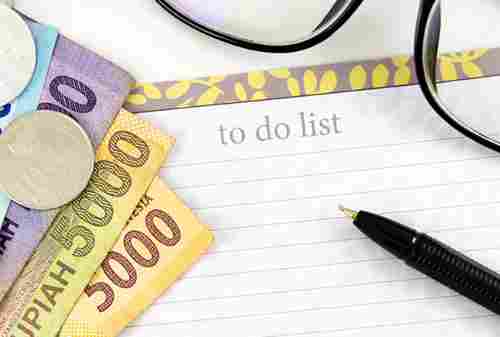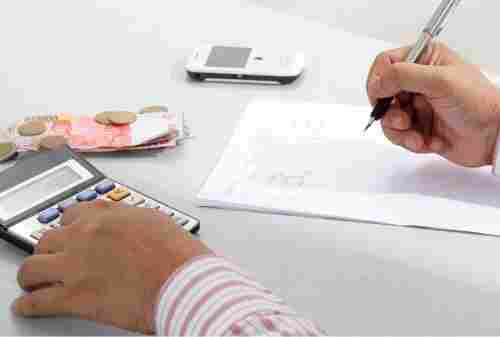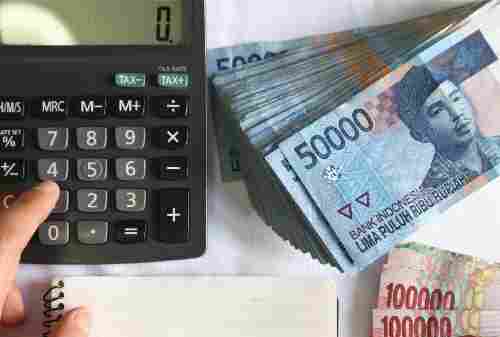Payday… then how is your budget planning money? Let’s continue to follow this article for us to learn money management strategy.
Please read until finished…
Budget Planning Money
We must realize, no one is born with the ability to manage money. By the time we’re adults, we are expected to be able to manage our money effectively, however few of us are taught how.
Therefore, many people experience the usual emotions that occur when they don’t know how to do something well. These may include:
- Frustration
- Guilt
- Envy
- Anger
- Shame
- Disappointment
Skill of managing money must be learned. You must know, it is never too late to start learning Doing so usually pays immediate benefits.
People, who manages their finances responsibly has peace of mind and knows how to:
- Pay their living expenses
- Keep debts to a manageable level
- Save for the extras that make life enjoyable
- Avoid constant money anxiety
It’s not how much you make, but what you do with what you’ve got. Proper money management does not involve a magic formula to find more money.
It simply means getting the most from the money you do have. Before you read any further, take a quick look at your current money management skill level. Answer the following questions truthfully, based on what you do today.
Ask yourself how much effort do you put in managing your own money? Do you keep track of what you spent in a day, week, or month? How many times do you regret spending so much money on something that will benefit you so little?
You do not need to share your answers with anyone, they are merely to help you identify how you may want to improve your own money management skills. The foundation of sound money management is the budget.
For many people, the word “budget” is sometimes a scary one. Now that it is your choice, are you afraid to make a budget? Building a spending plan, or budget, is a step by step process.
#1 Step Budget Planning Money, Set Realistic Goals
Before you can begin to manage your money, you need to identify what is important to you. Then you have a foundation to decide what you want to do with your money.
Write down what is important to you and use your list to help you determine goals for your money. Some ideas to help you get started are:
|
If it is important for you to… |
|
· live without money worries · have a home for your family · spend time traveling · enjoy camping with friends · help your children gain an education · start a business · drive a particular kind of vehicle |
|
Your goal may be to… |
|
· pay off credit cards · save 3 months of rent for “just in case” · build up savings to take time off work · buy new camping supplies · contribute to an RESP · save enough to apply for a business loan · save up a moderate down payment |
This isn’t as complicated as you may think. A short–term goal might be to pay off debt or buy a new appliance. A medium–term goal may be to take a cruise or save the down payment for a new car.
Long–term goals typically include plans for retirement, paying of a home or helping children start out on their own. The goals you set are yours; you have the power to choose what is important to you and design your goals accordingly.
Most people’s money problems occur because they don’t clearly know what they want to do with their money and therefore spend it randomly. Clear goals are the targets you are aiming for and help you build your plan.
After that, it’s a simple process to map out how you will achieve your financial goals. When setting financial goals, think about how much you need to save and for how long.
[Read Also: Why and How To Plan Your Budget for A Better Life]
Then think about how you will accomplish that savings. For most people, this means putting a set amount aside each month, according to their pay schedule. This monthly amount is the difference between just having a wish or making your wish a reality.
Be realistic when setting your goals. You can always increase your savings later, but start by planning for success! It can be strangely motivating to see your plans in black and white, so take some time to write down your financial goals.
Grab a pen and paper and jot them down, type them for yourself on your computer or your phone.
#2 Step Budget Planning Money, Identify Your Income and Expenses
Once you have established some goals for your money, it’s time to look at where it comes from and where it goes right now. When we manage our money, it’s easy to get into habits.
Some money management habits are positive and allow us to reap rewards later on. Others are negative and can lead us into trouble. Start by making a list of all your household income sources and the amounts.
Include everything: wages (after taxes), commissions, self–employment income, child tax benefits, pensions, child maintenance & spousal support, and other regular income.
Now it’s time to record your spending. This can be difficult because, for most people, they are clear about where their money comes from, but not as certain about where it goes.
Spending includes everything you spend your money on; all of what you may typically think of as “expenses” (utility bills, groceries, transportation costs), but savings for a rainy day, debt payments, life insurance premiums and contributions are all expenses as well.

Sumber: https://bit.ly/3utAcyB
If you keep records of family spending, this is the best place to start. Many families don’t record their spending, so you may need to gather spending information from bank account or credit card statements, cheques register books, receipts or bills.
Some of our spending is on a weekly or monthly basis, e.g. fuel for the car, groceries, paying utility bills. There are also seasonal or annual expenses that need to be accounted for in our budget, e.g. gifts, vet bills, holidays, home repair, new glasses or clothing.
To calculate monthly amounts for your annual expenses, simply divide the amount that you spend each year on these items by 12. Looking back and identifying expenses is a valuable start.
You may, however, have noticed that there seems to be more money going out than you have records for. That’s because every family has spending “leakage” – the little things that aren’t accounted for, but add up.
Tracking Expenses
To be absolutely sure where your family’s money is going, record everyone’s spending for two or three months. You may want to use the Credit Counselling Society’s Monthly Expense Tracker booklet, a spreadsheet, or a money management program.
Again, there is no need to make this process more complicated than it needs to be, a notebook and pencil will do. he purpose of tracking everyone’s spending is to find out where all the money is going. It may not be easy at times or you may forget to record some items.
However, tracking is a very important part of identifying your expenses. When you start tracking, you may be tempted to track how you think you should be spending.
Try not to do this, because your results won’t accurately reflect your spending. This is the time to learn what you are currently doing with your money, there will be time later to make adjustments and choices when you prepare to put your plan into action (step 4).
Do the best you can, you may be surprised by what you find.
And before we move to the next step, if you want to manage your money properly, Finansialku have an audiobook that you can listen to, for you to learn how to manage your finances, enjoy listening.
#3 Step Budget Planning Money, Separate Needs from Wants
As people track their spending, they discover that some of their money gets used for things they really don’t need. Instead, they merely want them and often buy them impulsively.
Impulse spending is unplanned spending; purchasing things that you may or may not need, or spending more on an item than you’d planned.
People spend impulsively for a variety of reasons. If they’re in a good mood, they spend out of pleasure and to keep the good mood. If they’re in a bad mood, they spend to try and make themselves feel better.
Some people spend in certain places or at certain times because they feel obligated to do so, e.g. on vacation, during special holiday seasons, when they’re with certain people, or while engaging in specific activities.
Impulse spending habits are often linked to stress levels. A little stress can be motivating but a lot of stress can rob you of your ability to make wise choices between needs and wants.
Read Also: 11 Practical Ways and How To Plan Your Budget For a Better Life
If you would like to learn more about why you spend impulsively and what you can do to change your spending patterns, have a look at this.
The key to good money management is separating needs from wants. If you aren’t sure if an item is a need or a want, do without it for a period of time. If after that time you truly can’t live without it, it may be a need.
However, even the essentials like shelter or transportation involve a want vs. need calculation. For instance, you may have evaluated all possible transportation methods for you to get to work and determined that you need to purchase a car.
Fine, but which car you buy is another choice you make. Do you buy the more expensive SUV that you want, or will a less expensive, more economical vehicle meet your need?
Almost everything you buy involves a want vs. need determination and ultimately, how you make these choices will determine if you reach your goals or not.
#4 Step Budget Planning Money, Design Your Budget
Many people don’t like the word “budget” because they think it means limitations, deprivation and no money to spend on the fun stuff.
Relax, your budget is your spending plan, it will allow you to live within your means, avoid the stress of money troubles and give you the freedom to make choices with what you have.
Most importantly, a budget will allow you to map your way to reaching your goals. Remember the goals you created in first step? Before you can go any further, you need to ensure that your expenses are not more than your income.
This is where you need to make some choices based on what you learned when you tracked your spending and when you separated your needs from your wants. Expenses include everything you spend your money on, not just the bills.
Money you deposit into your savings account for your vacation next year is also an expense. Total spending cannot be more than your total income. Ask yourself, will this budget allow me to reach my goals?
This might mean that you are not able to spend as much in one area of your budget as you did in the past. Your money could be needed somewhere else in your budget.
If you have a surplus, you need to make some choices about what to do with the extra money and may want to add it to your savings for now. Protecting Yourself against Financial Disaster – Emergency Savings

Sumber: https://bit.ly/2RQqIju
If you are experiencing financial difficulty, savings may be the furthest thing from your mind, however, even during this time, it is vital that you plan to have money for the unexpected.
Setting money aside for savings is the difference between having a budget that works and one that doesn’t. Not only does it protect you from financial disaster, it also helps you to meet your financial goals.
People who have savings available to pay for living costs and seasonal expenses if an emergency arises, do not need to rely on credit that they may not be able to afford to pay back.
Emergency savings covers your basic living costs in case there are changes in your income. For example, in the event of a job loss, it typically takes 3 months to get back on track with either a new source of income or outside assistance.
During this time, you still need money for rent, groceries and other essentials; this is what your emergency savings is for. If you face an expensive car or home repair bill, emergency savings will be available to pay for it.
Using income tax refund money, unexpected bonuses or gift money can jump start the emergency savings account. In addition to emergency savings, it is necessary to have general savings which you can use to meet your financial goals and ensure your sound financial future.
“Paying yourself first.” This savings is for the seasonal expenses you identified in your budget as well as for your goals. The best way to build savings is to have the money put aside before you see it.
Talk to your bank or credit union about automatic transfers to savings accounts each time you are paid.
How Much Should You Save?
There is no magic number that tells you what you should be saving each month. It depends on your income level, your debt load, your life stage, if you are employed, unemployed or retired as well as your financial goals.
At first you may find it difficult to set savings aside. If you have outstanding debts to pay or you aren’t in the habit of saving, it’s important to get started.
Save a small amount from each pay cheques at first and increase the amount as you are able to. You’ll be amazed at how quickly your savings can add up once you just get started!
#5 Step Budget Planning Money, Put Your Plan into Action
You’ve set goals, identified your income and expenses, determined how much to save for seasonal expenses, and made choices around needs and wants.
Now it’s time to put your plan into action! Use a pay cheque plan to match your spending patterns to your income schedule.
If you are paid every two weeks, then align your spending to a two-week schedule; if monthly, then a monthly schedule.
Use pay cheque planning worksheet to help you get started:
- In the budget column, record what you need to spend. Money that you set aside in a savings account is an expense that you deduct from your income.
- Note your pay dates across the top.
- If you have money in your bank account that you need for this month’s expenses, note that as income for this month as well. Don’t forget to subtract any cheques you have written that have not cleared your account yet.
- Record your net pay cheque amount for each pay date. List any other income you receive during the month in the week you will receive it.
- Decide when the expenses from your budget column will be paid. This will depend on your pay dates. Start with expenses that are due on specific dates, e.g. rent, hydro or car insurance. Try to balance the expenses evenly throughout the month.
- Total your income from each pay period and if there is any left over, add it to your savings account. If you are short, re-examine your expenses to see what you are able to reduce or evaluate if you are able to increase your income.
Irregular Income
Not everyone has a steady job with a steady pay cheque. You may have seasonal work, be self-employed or you may be on commission. In these cases, you can’t count on money coming in on a regular basis.
That doesn’t mean that you can’t create a budget, but it does mean that you need to plan in more detail. Part of the planning process must include a separate savings account for income tax payments at the end of the year.
And if you are self-employed, you must take deliberate steps to separate your personal and business finances.
If you have had irregular income for a few years, one strategy is to calculate the average net income you’ve had per year for at least 3 years, divide by 12 and use that amount to build your current budget.
Read Also: How To Manage Money For Young Adults
If this amount is not enough to meet your expenses, you must consider how you can increase your income or decrease your expenses to make your budget balance.
Another way to build a budget if you have irregular income is to set up a holding account. All of your income is deposited into the holding account.
You pay yourself a monthly amount based on what you have identified you can afford and what will allow you to meet your obligations. During months of higher income, the holding account will have a larger balance.
During the leaner months, the holding account balance will decrease. However, the amount you pay yourself does not vary from month to month. The holding account method also works well for students.
If you have a sum of money saved from employment, or if you receive a lump sum of student loan funding, set it all aside in a separate account so that you don’t spend it all at once.
Pay yourself a monthly or weekly amount to meet your obligations. You may also choose to supplement your weekly amount with part-time income while you are attending school.
This will not only beef up your resume, but can lower your long-term educational costs as well. A third way to deal with irregular income is to have two budgets, one for the better months and one for the leaner months.
For most people, this is the hardest way to manage their money effectively because it’s easy to get into a spending habit during the better months and then feel deprived during the leaner months.
People are tempted to spend because they expect to have money again in the better months ahead. Then they use credit to supplement their leaner times.
As a result, they develop a debt cycle that becomes expensive and difficult to break.
#6 Step Budget Planning Money, Manage Seasonal Expenses
Now that you have created a workable budget and have planned your pay cheques, the last step is to plan your savings money so that you are able to track and manage your seasonal expenses.
Set up a binder with one page for each seasonal expense item listed on your Budget Worksheet. The first page is what is actually in your savings account (A). List the date and how much you deposit or withdraw each time.
The subsequent pages are for the items you will need money for when the time comes, e.g. car repairs, vacations, gifts, clothing, etc. The important thing to remember is that the total of your seasonal expense pages must total what you actually have in your savings account.
Planning how to spend your saved money, just as you do your pay cheques, will allow you to have the money you need when you need it.
This will help you avoid the stress of debt and give you the freedom to make choices.
Download Aplikasi Finansialku Sekarang!!
#7 Step Budget Planning Money, Looking Ahead
Any good plan must involve monitoring, periodic review, and occasional re-evaluation. A spending plan is no different. Circumstances may change, mistakes can be made and your needs will vary at different times in your life.
When you first build your spending plan, you are going to need more time to monitor it to ensure that it is based on realistic information. It will take a month to start falling into place.
During the second month, you will work out some of the kinks and the routine will start to become part of your daily thinking. It should now start to fall into place more easily.
By the third month, your spending plan should be up and running. Congratulations, you have taken control of your finances! However, if it isn’t working yet, ask yourself a few questions:
- Did I calculate my income correctly?
- Are my expense figures accurate?
- Is everyone’s income and expenses accounted for?
- Is my plan based on actual numbers or what I hope I can earn or spend?
- Did I give it a fair chance?
- Do I need professional advice?
For the first year, you will need to review your plan monthly. If it is working, during the second year you can review it every 3-4 months. After that, you will need to review it annually.
However, if there are any major changes in your financial life, you will need to re-evaluate your plan and possibly change it. Some major changes might include increased transportation or housing costs or a loss or increase of income.
Similarly, large purchases or expenses may mean that you will need to cut back somewhere else so that everything fits again. As you become more in the habit of managing your money effectively, your plan will feel natural and develop into a part of how you do things in your household.
Some of the steps may blend together at times or you may add a step or two to make it easier for yourself.
Give yourself permission to make changes that benefit you and your family. Having a plan with a solid foundation will allow you to come out ahead, rather than in debt.
Is it possible that from each of the steps above, you have already done something? Let’s share your experience with us in the comment column.
Don’t forget to share this article for those who need it…
Good luck! And thankyou…
References:
- Admin. 2021. 7 Steps to Build a Household Budget | Money Management Strategies. Mymoneycoach.ca https://bit.ly/2RLYWF4
Credit:
- https://bit.ly/3utAcyB
- https://bit.ly/2RQqIju
- https://bit.ly/3oVH8U0
dilema besar





